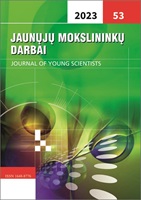Funkcinės elektrinės stimuliacijos ir transkutaninės elektrinės nervų stimuliacijos poveikis nugaros smegenų pažeidimą patyrusių asmenų spastiškumui ir raumenų savybėms
Effects of Functional Electrical Stimulation and Transcutaneous Electrical Nerve Stimulation on Spasticity and Muscle Properties in Spinal Cord Injured Individuals
Author(s): Karolina Keinaitė, Kęstutis SkučasSubject(s): Neuropsychology, Health and medicine and law
Published by: Vilniaus Universiteto Leidykla
Keywords: functional electrical stimulation; transcutaneous electrical nerve stimulation; spinal cord injury; spasticity; myotonometer;
Summary/Abstract: The goal isto investigate and evaluate the effects of FES and TENS, individuals who have suffered spinal cord injury, spasticity of paresis or plethora leg muscles, and muscle characteristics. The study was conducted in the homes of the persons. Before and after stimulation, spasticity and muscle properties were measured using the myotonometer “Myoton”. Using Compex Cefar and Compex Mini stimulants, 30 min. FES was applied to the left leg and 30 min. of the TENS program to the right leg. The study involved 10 individuals who suffered spinal cord injury. Tens showed a statistically significant increase in the elasticity of the quadriceps thigh muscle (p < 0.05), which means that the ability of the muscles to resist muscle contraction and the effects of external factors increased. All other measurements did not have a statistically reliable difference (p > 0.05). No statistically significant difference was also found between the FES and TENS groups (p > 0.05). Although FES and TENS did not have a statistically significant impact on elasticity and muscle tone, tens had a statistically significant deterioration in the muscle property of elasticity, which means that spasticity increased.
Journal: Jaunųjų mokslininkų darbai
- Issue Year: 2023
- Issue No: 1 (53)
- Page Range: 41-47
- Page Count: 7
- Language: Lithuanian

